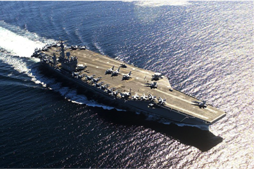-
WHAT IS NASA PHYSICS?
-
MODULES
-
Forces and Motion
-
Conservation of Momentum & Energy
-
Temperature and Heat
-
Fluids
-
Optics
-
Electromagnetic Spectrum
-
Modern Physics
-
Anticipation Guide 7
-
Intro to Modern Physics
-
Blackbody Radiation
-
The Ultraviolet Catastrophe
-
The Photoelectric Effect
-
Bohr's Atom
-
Spectra
-
Radioactive Decay
-
Special Relativity (SR)
-
Simultaneity
-
Distance and Time
-
General Relativity
-
May the Forces be with You
-
Modern Physics Notebook
-
Assessment Problems 7
-
-
Useful Things
-
-
SITE MAP
Forces and Motion
-
Anticipation Guide
-
Speed and Velocity
-
Acceleration
-
Gravity
-
Projectile Motion
-
Orbital Motion
-
Newton's Laws of Motion
-
Assessment Problems
Equation
velocity =
acceleration x time
v = at
1.4
Equation
final velocity = initial velocity + acceleration x time
vf = vi + at
1.5
Equation
average velocity = initial velocity + final velocity ÷ two
vave = (vi + vf) / 2
1.6
Equation
distance traveled = ½ x acceleration x times squared
d = ½ at2
1.7
Acceleration
Example Question
 If a plane on an aircraft carrier accelerates from rest to 90 m/s in 3 seconds, its average acceleration from Eqn 1.3 is:
If a plane on an aircraft carrier accelerates from rest to 90 m/s in 3 seconds, its average acceleration from Eqn 1.3 is:
a = v/t = (90 m/s)/3 s = 30 m/s2
The speed or velocity that the plane is moving can also be calculated knowing its acceleration and the amount of time it has been accelerating. Just rearrange equation (1.3) to get:
velocity = acceleration x time v = at
If an object was already moving and then accelerated, its final velocity, vf, is:
Or more generally, final velocity = initial velocity + acceleration x time vf = vi + at
In many problems, such as this one, the initial velocity, vi, is zero.
Of course, the plane needs to accelerate to 90 m/s this speed (if that is what it takes to become airborne) before it goes careening off the bow of the aircraft carrier into the ocean. So, you might ask, how far has the plane traveled in the 3 seconds it took for it to accelerate to 90 m/s? We can figure this out by mathematically juggling things you already know.
Since from Eqn 1.1: v = d/t, then d = vt or distance equals velocity x time, which is true for the average velocity. By definition the average velocity is found by adding initial and final velocities and dividing by 2 (or multiplying by ½):
vave = ½ (vi + vf)
d = ½ (vi + vf) t
Now we substitute what vf is from equation 1.5 into this to solve for distance traveled in terms of time and acceleration:
d = ½ (vi + vi + at) t
now add the two vi together:
d = ½ (2vi + at) t
now multiply each term by t:
d = ½(2vi t+ at2)
finally, divide each term by 2:
d = vi t+ ½at2
and if vi is zero, then
distance traveled = ½ x acceleration x times squared d = ½ at2
So, how far did the plane travel in 3 seconds?
d = ½ at2 = ½ x 30 x 32 = 15 m/s2 x 9 s2 = 135 m
And how long are aircraft carriers? The largest, such as the USS Nimitz, is 333 m long, providing plenty of room to accelerate fast enough for a safe takeoff!
When you first glanced at this page and saw the equations you may have groaned that physics is difficult. But I hope that as you read through the equations you saw that each step is easy and logical. If so you are beginning to think like a physicist!
© 2013 by Wheeling Jesuit University/Center for Educational Technologies®. 316 Washington Ave., Wheeling, WV 26003-6243. All rights reserved. Privacy Policy and Terms of Use.

